Table of Contents Show
With modern sitcoms like Arrested Development and BoJack Horseman concluding, we look forward to a new era of television. But as we look forward, it is only right that we look backward. A show that has grown alongside many decades is Seinfeld. The sitcom — ranging from 1989 to 1998 — was created by Larry David and Jerry Seinfeld. The series featured a likable cast with a glittering color palette and a guaranteed laugh each episode.
The reason for these guaranteed laughs is because “One of the central differences between Seinfeld and more traditionally oriented TV sitcoms like Couch is that the main characters “know” they are involved in an elaborate, largely contrived social game of witty dialogue, false deceptions, and desires” (( Pierson, 2004, 49 )).
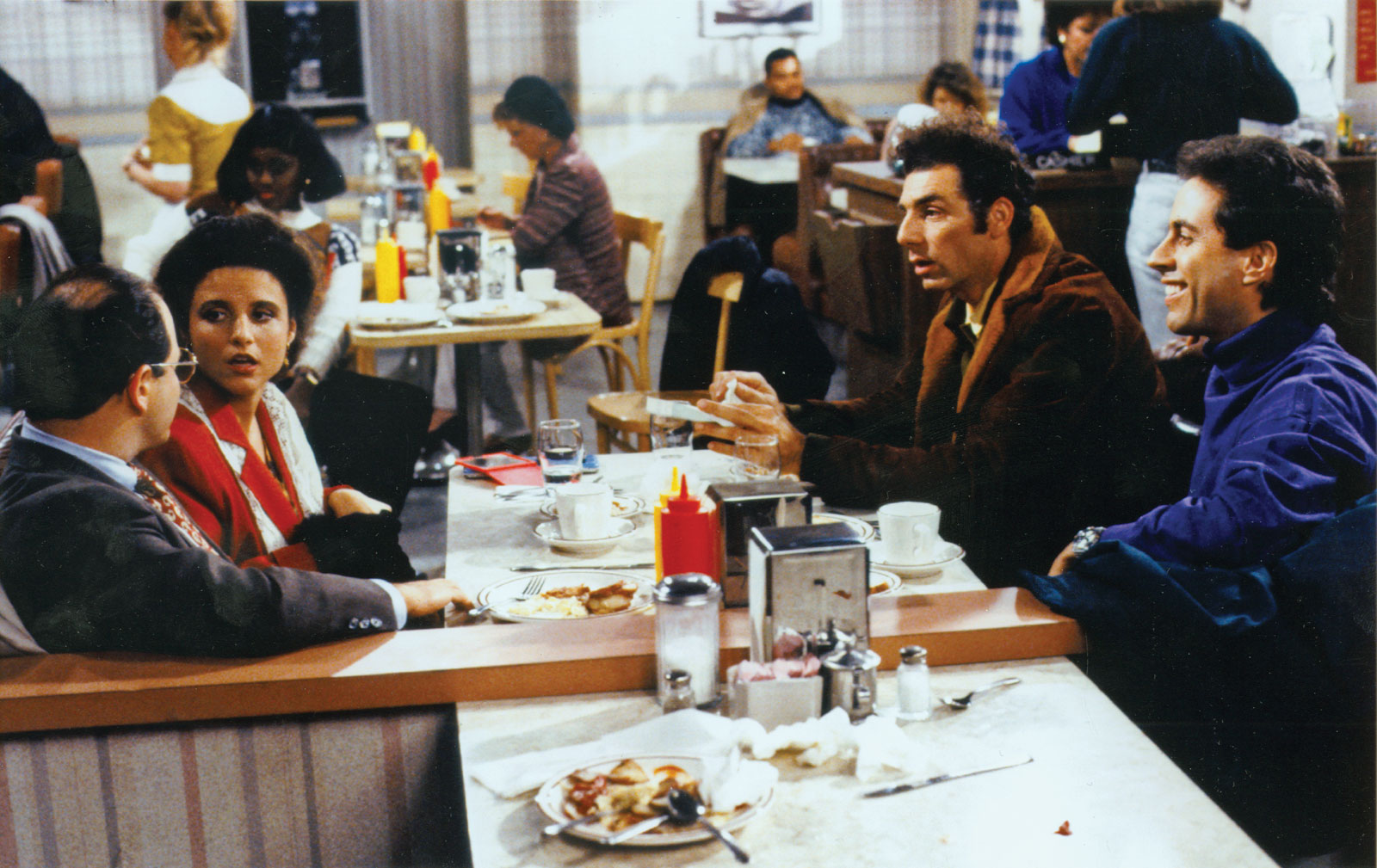
Jerry Seinfeld, Elaine Benes, George Costanza, and Cosmo Kramer each have antics in an episode that makes for a flawless sitcom. But to be crowned the best sitcom of all time, you must possess more than that, right? Not only does Seinfeld illustrate a perfect sitcom because of its antics, but it also pushes the boundaries of classic television stereotypes of the time; it builds characters, and it creates its own universe in a matter of minutes.
How has it managed to grow with time? Well, that’s simple: the situations grow with time, the jokes grow with time, and the friendship that they have together is relatable. Seinfeld is a relatable television sitcom.
The Concept Of Seinfeld
In Manhattan’s Upper West Side, Jerry and his friends live a mundane day-to-day; they go to work, they go home and have the occasional relationship here and there. This is the usual routine of life, especially adult life. The series was pitched as a “show about nothing,” and “nothing” it pretty much is. Seinfeld doesn’t bleed jokes or plots into an overarching season finale. Instead, the series focuses its space and time on each individual episode and antics.
Yes, George has the same problems in various episodes, but the jokes are never the same. The personality traits might be, but the effortless comedy is genuine and raw. And the rare chance that plots do overlap is that they are funnier than the original (i.e. George recycling girlfriends or Jerry recycling girlfriends). Don’t even get me started on Elaine’s plots that overlap, they are absolutely hilarious (( Maire Claire )).
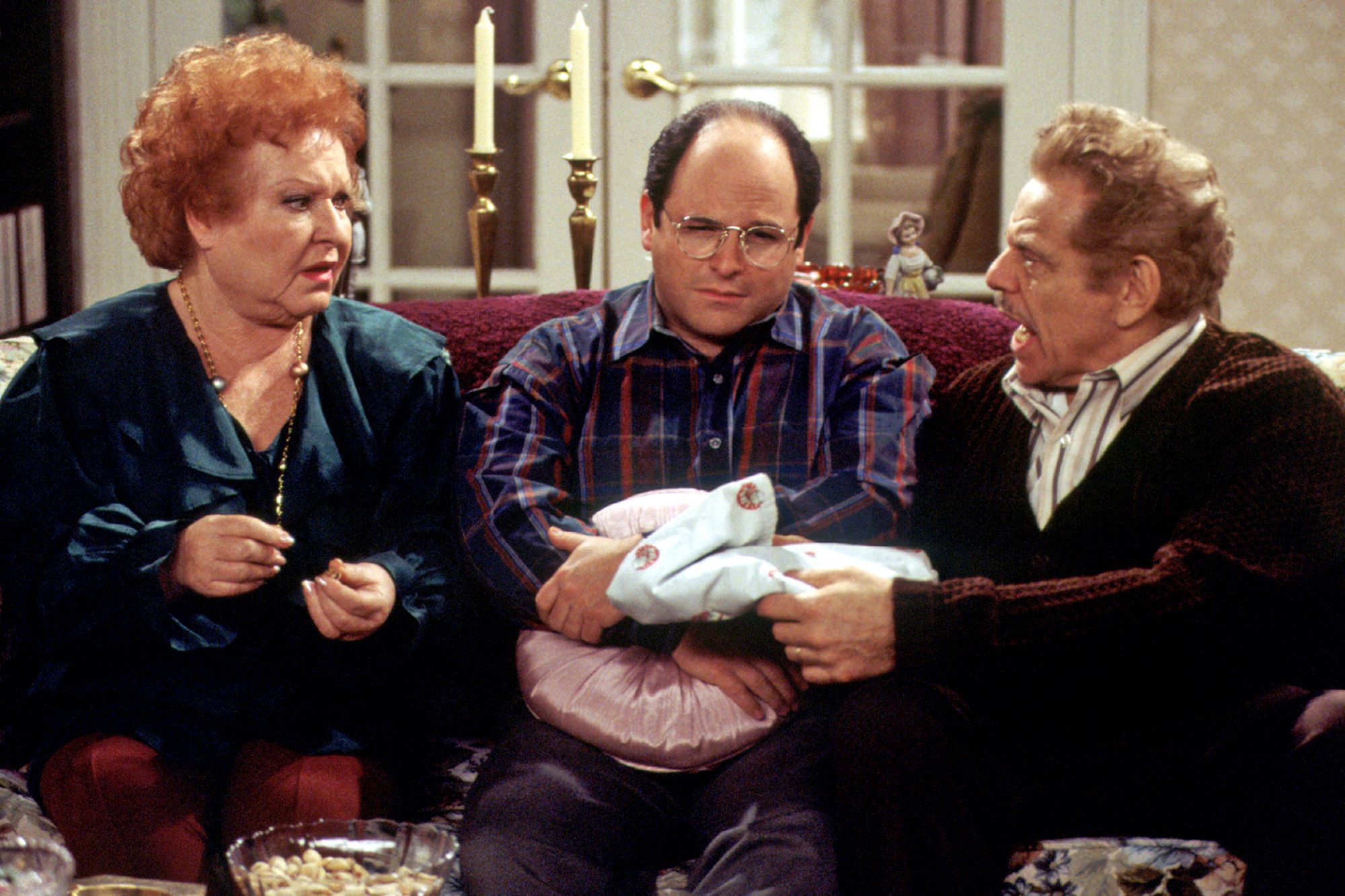
Each individual episode is focused on a one-time event in the creators’ lives, that is why plots never bleed into one another. The idea of a sitcom is a situational comedy, the situation you are in is what makes it comedic and that is literally all Seinfeld is as a show: “Since Seinfeld‘s characters do not easily fit into the social-climbing world of the literary manners genre, the popular TV sitcom can best be associated with the modern comedy of manners dramatic genre” (( Pierson, 2004, 50 )). The chance of them happening would be a million to one, but the chance of dating an ex? Now that could be mildly possible with George, Jerry, or Elaine.
The Color Palette As A Character
Seinfeld’s color palette relies on its use of clothing and wall color. The early episodes experimented with the concept of harsh colors if you watch the first season (( S1, E1 )) “Pilot” you will notice the drastic use of red in Jerry’s shirt, while the first season’s episodes are not as great as the latter seasons, the color palette began in the “Pilot.” The color of Jerry’s apartment is harsh, as he grows along with the show (( Season 2 )) the colors begin to dilute.
The pitch for the season is what started it all, however (a show about nothing). As a sitcom, the show relies on backdrops and establishing shots (i.e. Jerry’s house, George’s house, Elaine’s house). It creates the settings and rooms as a character, Jerry’s house is a prime example of an establishing shot being seen as a character as it changes with time and as Jerry changes.
His living room, or apartment view, is the most frequent building that Seinfeld exists in, as the show is based around Jerry and his day-to-day life with his group of friends. Bringing the use of Jerry’s living room from Season 1 back to fruition, the door, a grey color, and the living room littered with various colors that pop. Jerry’s living room changes from a brown to an eventual green of the cabinets, the brown to eventual off-white walls, the tables and chairs being a distinct color as well. It all represents who Jerry was at the time of Season 1.
By the fourth to the fifth season, Jerry has drastically changed as well as the people around him. So as his living room changes so does his character’s personality. We know Jerry by the look of his house and without it, Jerry would be a foreign character. Jerry’s living room is layered in bachelor… if it were a color.
Jerry Seinfeld, The Ultimate Bachelor?
When you see his living room, you can’t help but assume that he is a bachelor; the colors represent the fact that he is. In the second season (( Season 2, Episode 1 )) the cabinet colors shift, they are now an off-blue or grey from the appearance of them. The colors are more vibrant and Jerry has a seemingly much more rounded personality as the first episode of the second season is titled, “The Ex-Girlfriend.”
(This is an example of an establishing plot that has the possibility to come up again, as exes always do in Seinfeld.) However, as the series progresses he wears bright colors but his walls are a baseless off-white, light brown color. His bathroom walls are orange, there are specific pops of color around his kitchen (the kitchen sink, the fridge magnets and papers, and the kitchen cabinets).
Jerry’s personality is a spontaneous bachelor, which is why his colors change so often throughout the series. One minute he is a bachelor, the next he isn’t; so the colors need to shift in order to represent that. He thinks he’s always lucky, expressing at one point in the series: “It always works out for me” (( Season 5, Episode 22, [1994] )).
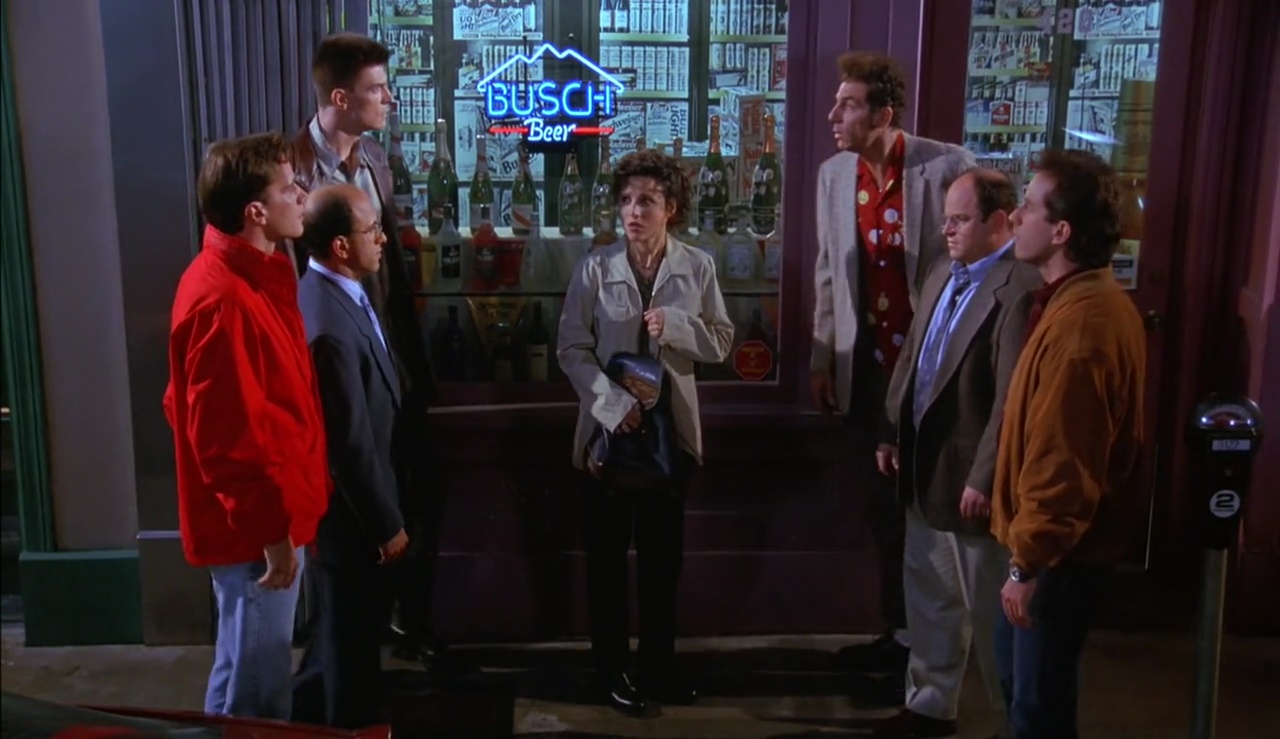
This is why he is more easy-going than his compadres, especially George. His living room is a character, a part of Jerry. The same goes for the various characters’ establishing rooms, Elaine’s bedroom, her living room, the coloring in her clothing. Same with George and Kramer. The true color, however, is in the clothing. Jerry, often wearing a bright shirt; Elaine’s matching color palette to her personality; George’s browns, greens, and reds depict his melancholy personality; Kramer, always putting his best whacky style choices first with contrasting brown and pastel green shirts and jackets.
The clothing of each character resembles their personality and who they are (and that, too, changes throughout the series). The color palette was much different than what was on television at the time – it provided a new narrative for the episodic series. Seinfeld knew how to create a voice within the rooms it existed in. The universe is further expanded by the use of settings throughout the neighborhood: the cafe, various stores, cars, seeing recurring bystanders, and every aspect that is used to remind you of Jerry and his friends.
Humor Is What Makes Seinfeld Timeless
But the show has to do more than just color and comedy, right? Yes. Aside from the colors being distinct and drifting away from classic Hollywood television, the series as a whole broke barriers. It talked about topics that were taboo in television, the mere fact that it mentioned ‘shrinkage’ was enough to make it quite the taboo series, especially in the 90s. The less serious episodes, however, are where Seinfeld finds its promise. Calling a baby “ugly” in the episode “You gotta see the baby!” (( Season 5, Episode 21; “The Hamptons” ))
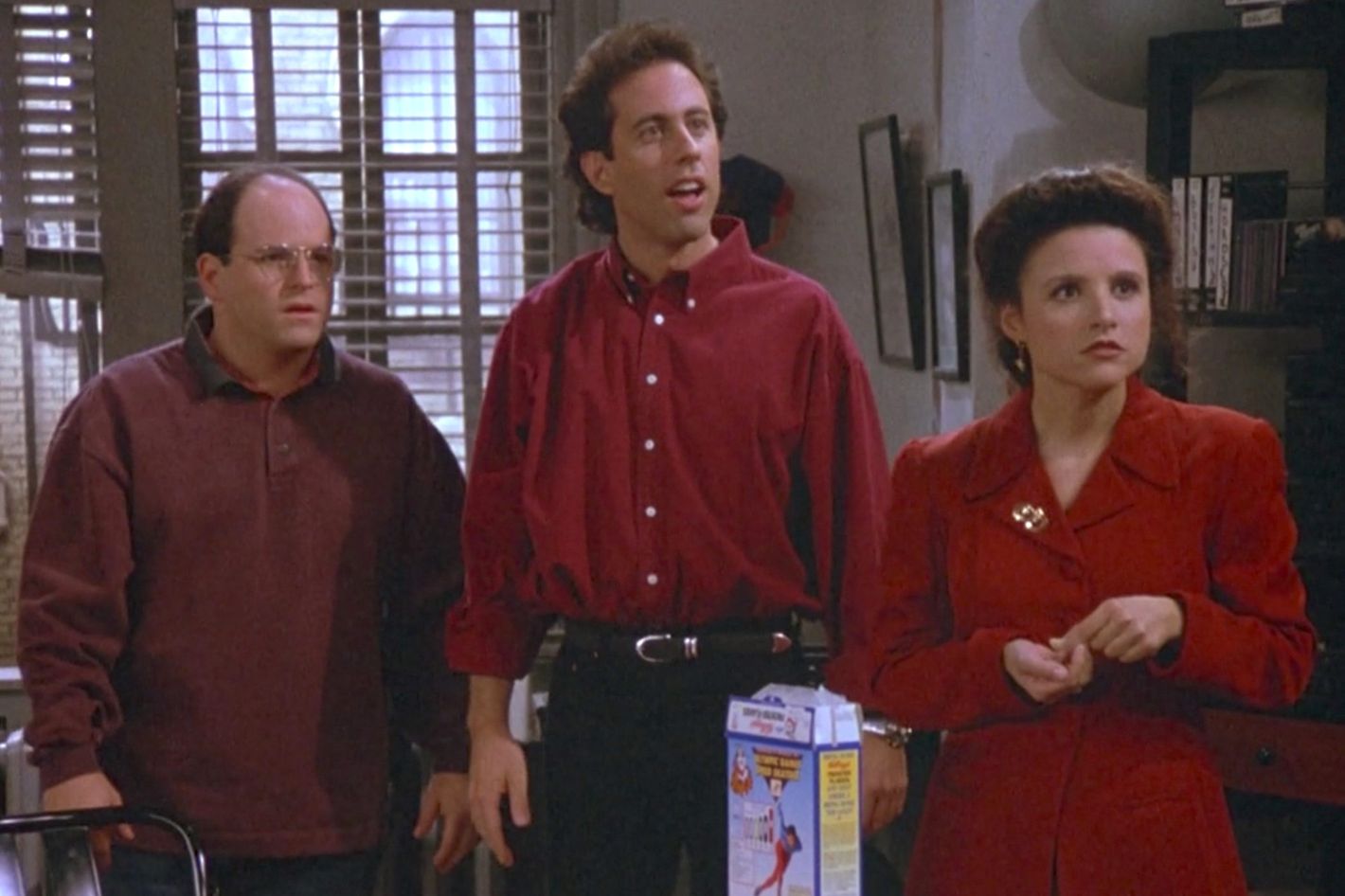
These episodes are where the true comedy lies, who would think to call a baby ugly and compare it to a person as a joke? The way in which Seinfeld delivers the jokes and plays them out is what makes the series special. It ages well because the jokes age well. A joke about shrinkage will forever be relevant because it will forever be a problem for men. Being the “master of your domain” (( Season 4, Episode 11 “The Contest” )) will forever be an issue because everyone struggles with being the master of their domain. Each joke the episode centers upon is what makes the show timeless.
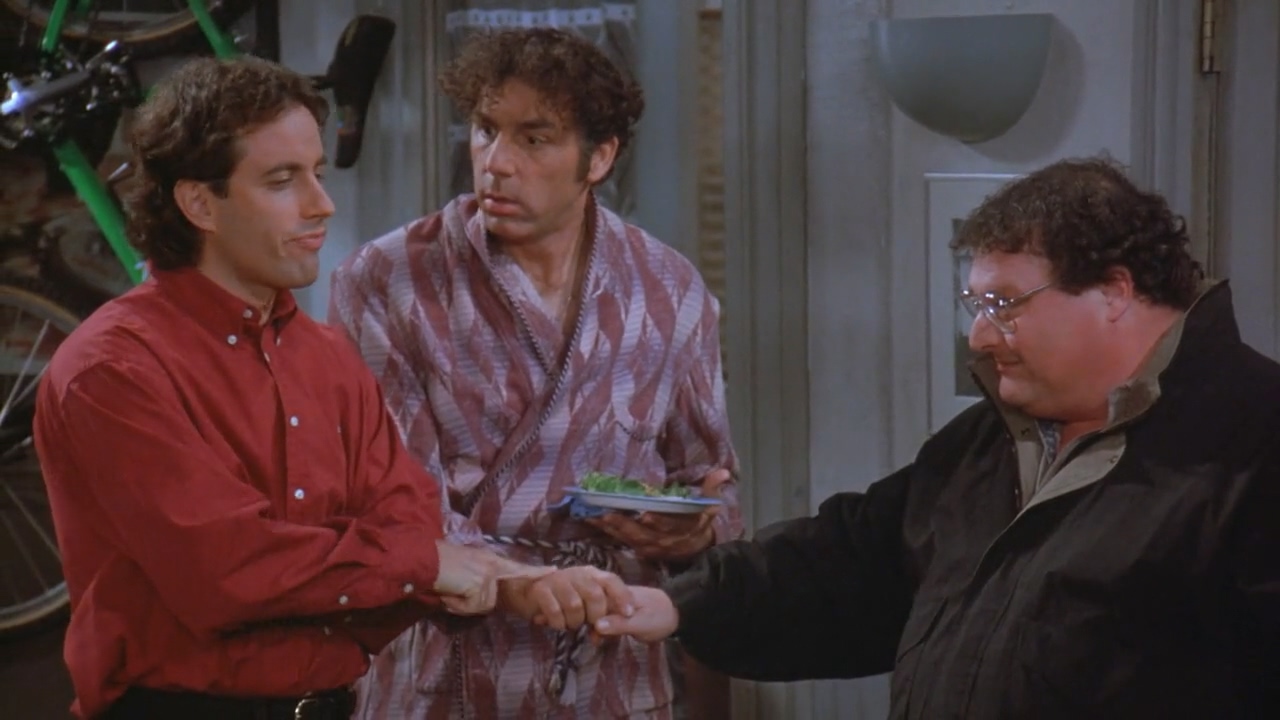
At the time, David and Seinfeld might not have known that it would age so well, I mean whomever really knows? But Seinfeld will go down in history as one of the better sitcoms of the past two decades. Simply because its use of comedy is timeless, the jokes never expire, and that is what makes the show incredible.
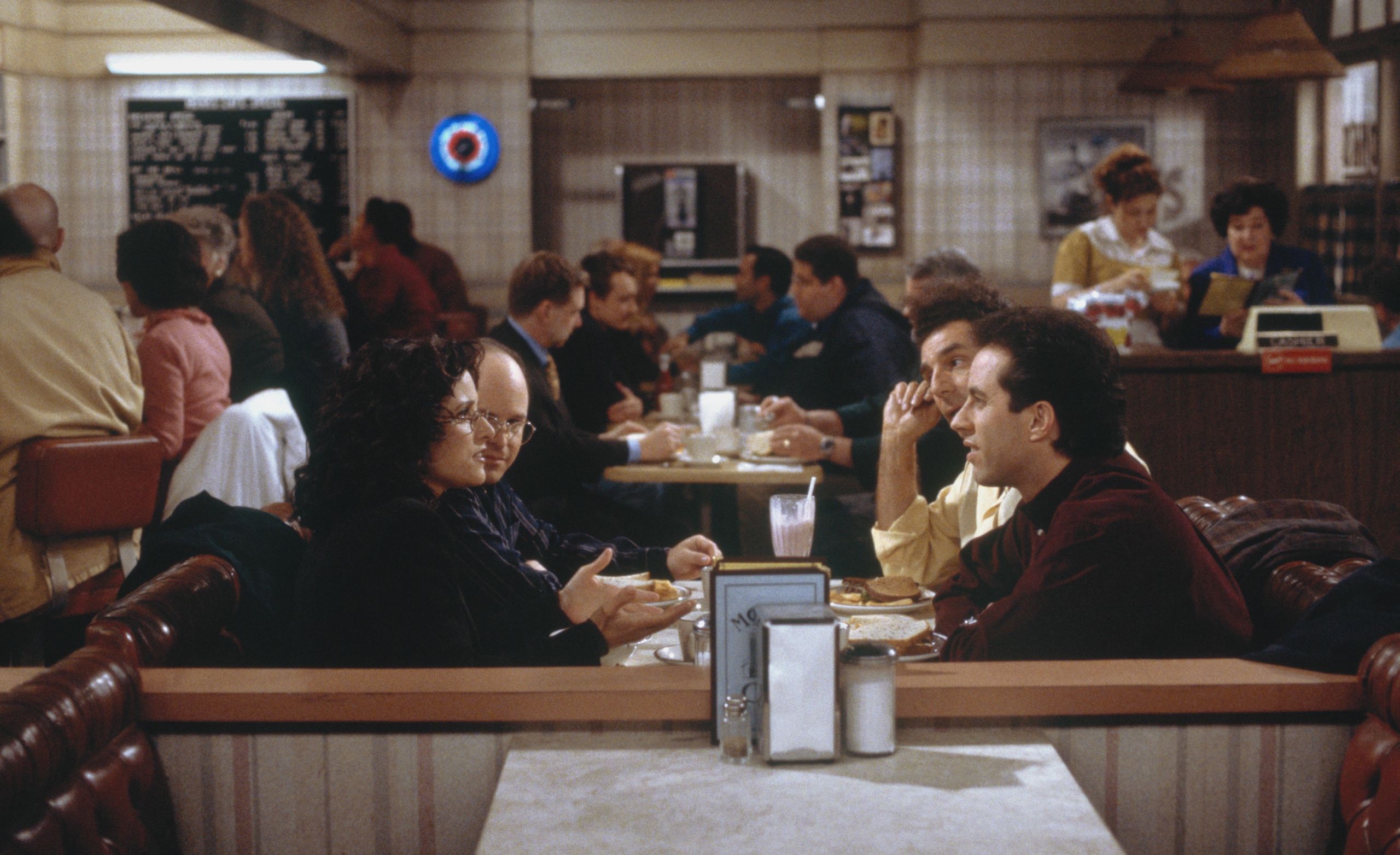
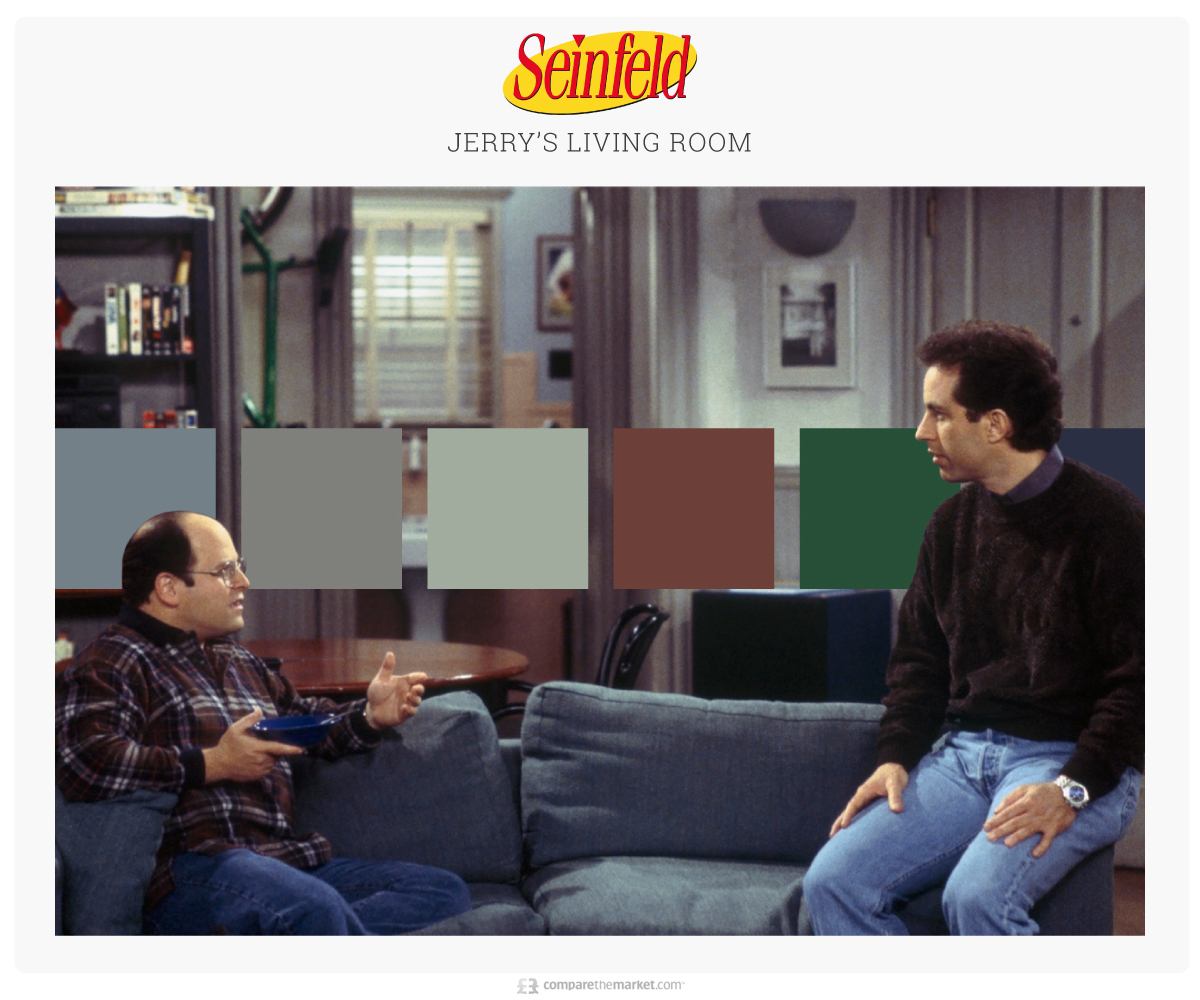
Colors are quite useful for subtle expressions of characters on TV. In the sitcom, “Big Bang Theory” the current mood of the character Sheldon was expressed with the color of his superhero shirt.